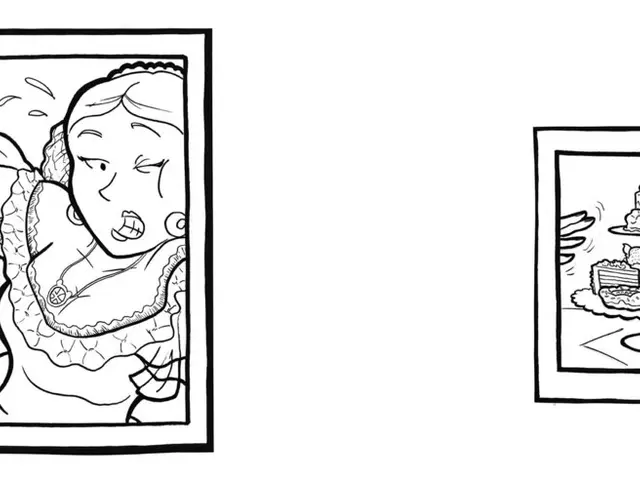Distinguishing Age Spots from Skin Cancer: Identification Guidelines
Age Spots vs. Skin Cancer: Understanding the Differences
As a person ages, skin discolorations known as age spots can appear, often resembling certain types of skin cancer or precancerous growths. Both age spots and skin cancer are more likely to develop on areas of the skin frequently exposed to sun, such as the face, hands, or shoulders. Recognizing the key differences between these two conditions can aid in identifying when a medical evaluation may be necessary.
What Differentiation Exists Between Age Spots and Skin Cancer?
While age spots and skin cancer may share superficial resemblances, age spots are harmless and do not necessitate removal or treatment, unlike skin cancer.
Age Spots
These small patches of skin typically exhibit a darker color compared to the surrounding area. Age spots, also known as solar lentigines or liver spots, are generally flat and smooth, without itching or feeling crusty. Age spots develop due to an excess of melanin produced by the body to shield the skin from UV radiation in the sun. They most commonly emerge in middle age.
Skin Cancer
Skin cancer poses a threat to health, spreading to other parts of the body if left untreated. Skin cancer, like age spots, is more likely to develop on areas exposed to sunlight, stemming from damage caused by UV radiation or other factors. This damage prompts abnormal cell growth and proliferation.
Common types of skin cancer include basal cell carcinoma, squamous cell carcinoma, and melanoma. Actinic keratosis, a precancerous growth which can resemble age spots, may also appear due to UV radiation exposure.
Can Age Spots Transform into Cancer?
Age spots do not have the capacity to transform into cancer. Actinic keratosis, however, is a precancerous growth which, if left untreated, may progress into a malignant state.
Symptoms Comparison
Various differences in the symptoms between age spots and skin cancer can aid in recognizing the occurring condition.
Age Spots
- Flat, smooth, and generally faded
- Tan, brown, or gray coloration
- Outlined with clear borders, and range in size from a few millimeters to centimeters
- Found on areas exposed to sunlight, such as the face, hands, shoulders, feet, arms, or back
Skin Cancer
- Irregular, asymmetrical, or multi-colored shapes
- Changing size, color, or shape over time
- Multiple colors, such as pink, blue, purple, black, or brown
- Raised, red patches, pale or yellow firm patches resembling scars
- Itching, oozing, or bleeding without healing within a four-week period
When to Contact a Doctor
Generally, an individual should consult a healthcare professional if they notice any unusual skin changes, as early diagnosis can make the treatment process more manageable. Seek medical advice if a mark on the skin:
- Changes in color, shape, size, or location
- Appears different from other marks on the skin
- Itches or displays other symptoms of potential skin cancer
Diagnosis
To diagnose age spots, a doctor or dermatologist performs a physical examination of the spot, considering appearance, texture, and location. If uncertainty remains after this evaluation, a skin biopsy may be performed to confirm the condition and ensure proper treatment.
Treatment
Age spots do not pose a health risk, so no treatment is required unless for cosmetic reasons. Potential treatments include creams, lotions, peels, laser therapy, cryotherapy, or microdermabrasion. Skin cancer treatment depends on the type, location, and severity. Surgical removal, radiation therapy, topical chemotherapy, immunotherapy, or systemic medication may be employed.
Summary
Though age spots, skin cancer, and actinic keratosis may resemble one another, key differences in size, shape, texture, and color can help in identifying each condition. Recognizing and addressing unusual skin changes promptly may aid in early detection of skin cancer and improve health outcomes. Should a person decide to treat age spots cosmetically, various treatments are available for reducing their appearance.
- Recognizing the differences between age spots and skin cancer can help in determining when a medical evaluation might be necessary.
- Unlike skin cancer, age spots are harmless, do not necessitate removal or treatment, and do not have the capacity to transform into cancer.
- Skin cancer can pose a threat to health, spreading to other parts of the body if left untreated, whereas age spots are generally flat, smooth, and display tan, brown, or gray coloration.
- Actinic keratosis, a precancerous growth resembling age spots, may progress into malignant skin cancer if left untreated.
- People should consult a healthcare professional when they notice unusual skin changes, as early diagnosis can make the treatment process more manageable and improve health outcomes. Diagnosis of age spots involves a physical examination, while different types of treatments are available for the cosmetic reduction of their appearance, but the treatment for skin cancer depends on its type, location, and severity.








